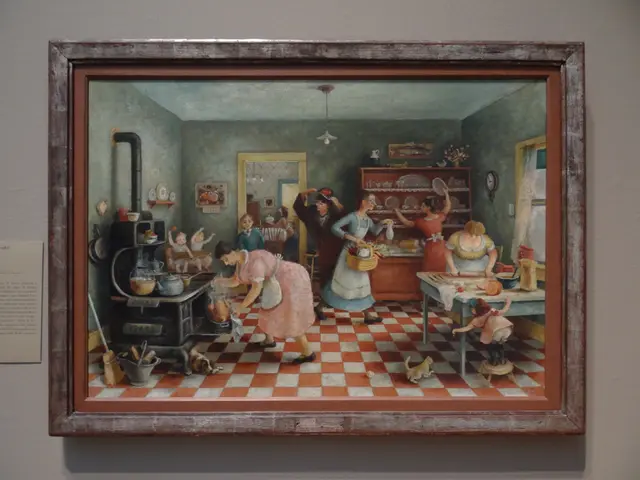Statistics Revealing Advantages of Art Education: Groundwork for Development
Art education plays a significant role in fostering emotional and social growth among children, providing a unique and enriching environment for self-expression and interpersonal development.
In high school art classes, group activities strengthen bonds and remind students of childhood lessons on empathy and respect. Art fosters trust and social bonds, as it's easier to connect while discussing ideas and colour choices rather than focusing on competition.
One of the key emotional benefits of art education is its ability to help children express feelings they may not be able to articulate verbally. Through colours, shapes, and artistic media, children externalise emotions like joy, sadness, frustration, or confusion, facilitating better emotional understanding and regulation.
Engaging in art also cultivates emotional literacy by helping children recognise, understand, and manage their emotions. Artistic activities such as drawing feelings or moods through colours and forms create a safe space for self-reflection and mindfulness, which supports emotional well-being.
Another advantage of art education is its stress-reducing properties. Artistic play and creation have been shown to reduce stress in children, positively impacting their school performance and home life by providing a healthy emotional outlet.
On the social front, art education nurtures empathy by helping children decode nonverbal emotional cues in themselves and others, leading to kinder social interactions and stronger peer relationships. Group art projects foster key social skills such as teamwork, active listening, respecting diverse perspectives, and communication. These collaborative experiences build a sense of community and belonging among children.
Sharing artwork and receiving feedback builds children's confidence and self-esteem, enhancing their social adaptability and willingness to engage in social settings. Art education develops emotional intelligence by combining emotional expression with social interaction, preparing children for positive relationships both inside and outside school.
Schools with strong art programs report lower dropout rates and improved classroom dynamics. Art gives children a way to surface and explore complex feelings in a playful and safer manner. In art classes in high school, teenagers often find a nonjudgmental zone for releasing stress.
Art education can prepare children for the future with strength and kindness, fostering emotional and social growth. Children who participate in art regularly show greater emotional regulation and higher levels of self-confidence. Art encourages kids to feel comfortable opening up and be more flexible with peers, building a stronger sense of compassion.
Exam scores can rise among consistent art participants due to the thinking habits fostered by creativity. Art helps children connect colours with feelings like joy or sadness, which can transfer to social settings, where empathy counts.
Art supports emotional and social development in children by offering a means for them to express dreams, frustrations, and wishes. Studies show that playful artistic activities help reduce stress in children, impacting school performance and home life positively.
High school art classes can help teenagers discover talents in graphic design, illustration, or photography. Art helps children take risks, learn that mistakes can lead to inspiration, and adapt faster to new ideas, fostering mental resilience and healthy emotional outlets.
Public school art programs can bridge language or cultural gaps among diverse students. Art is very hands-on, anchoring children in the present moment and helping reduce anxiety or tension. Arts education in public schools helps students visualise problems in multiple ways, aiding in subjects like math and languages.
Art education fosters resilience and trust among students, helping them learn to see multiple viewpoints. The goal of art education is not about making perfect artwork, but about giving kids a chance to express themselves and explore feelings they may not grasp with words.
Art education extends beyond artistic skills, facilitating emotional literacy through expression and self-reflection (emotional-and-self-development). By understanding and managing emotions, children cultivate resilience and improve their school performance (general-news).
Art education also promotes social development, teaching children to decode nonverbal emotional cues and fostering empathy, respect, and teamwork (lifestyle). As students collaborate on art projects, they build stronger bonds and develop key social skills (lifestyle).




